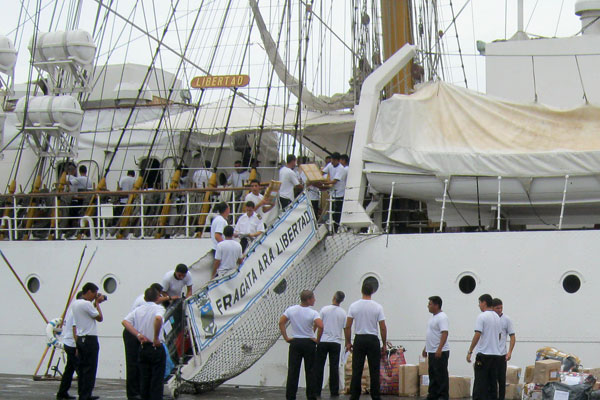Argentina’s Ship of State Hits Choppy Waters
It’s Spring Break in Argentina, and tens of thousands of demonstrators have taken to the streets to protest the policies of President Cristina Fernández de Kirchner.
It’s Spring Break in Argentina, and tens of thousands of demonstrators have taken to the streets to protest the policies of President Cristina Fernández de Kirchner.
Argentineans are angry—about rising crime, corruption, and the virtual ban her government has imposed on the purchase of foreign currencies as it attempts to stanch the increasing capital flight induced by out-of-control government spending and expropriation of private companies. Members of Argentina’s coast guard and military have joined the protests, while teachers have gone on strike demanding back wages.
 Continuing her campaign of provocation and harassment of Great Britain over U.K. sovereignty of the Falkland Islands, Fernández de Kirchner’s government recently banned British ships from docking in Argentina.
Continuing her campaign of provocation and harassment of Great Britain over U.K. sovereignty of the Falkland Islands, Fernández de Kirchner’s government recently banned British ships from docking in Argentina.
However, it is where the Argentine navy’s iconic, three-masted training ship ARA Libertad is currently docked that perfectly symbolizes the political and economic tempest currently engulfing Argentina’s ship of state. The tall ship was seized in Ghana on October 2.
The vessel’s crew of 300 has been forced to abandon the ship, and the top brass of Argentina’s navy, defense, commerce, and foreign ministries are all blaming each other for the international humiliation—notwithstanding that many of them were aware that if the ship stopped in an African port, it could be subject to attachment by so-called hold-out creditors who are suing Argentina and seeking to recoup a fraction of the $4.5 billion of defaulted bonds still owed to creditors from the country’s massive 2001 sovereign default.
According to press reports in Argentine dailies such as Clarín and La Nacion, however, the real blame for the fiasco should be laid at the feet of Cecilia Nahón, a young foreign ministry official who reportedly advanced the plan for a “Good Will Mission” to Africa. Nahón is a member of La Cámpora, an organized youth wing of the Peronist party that was founded by Fernández de Kirchner’s son, Máximo, in 2003.
Members of La Cámpora have increasing influence and are seen now as a major center of power within the government, occupying some 300-plus posts within it. Representing the ideological left of the Partido Justicilista (Peronist party), they are notorious for their Marxist views that eschew the international free market system. La Cámpora’s current leader, Deputy Minister of Economy Axel Kiciloff, is described by Reuters as the “leftist mastermind” behind the government’s nationalization earlier this year of YPF, a subsidiary of the private Spanish company Repsol.
To right her ship of state and get it back on course, President Fernández de Kirchner would do well to put some distance between herself and La Cámpora’s ideologues in order to normalize Argentina’s rocky relationship with the international community.
